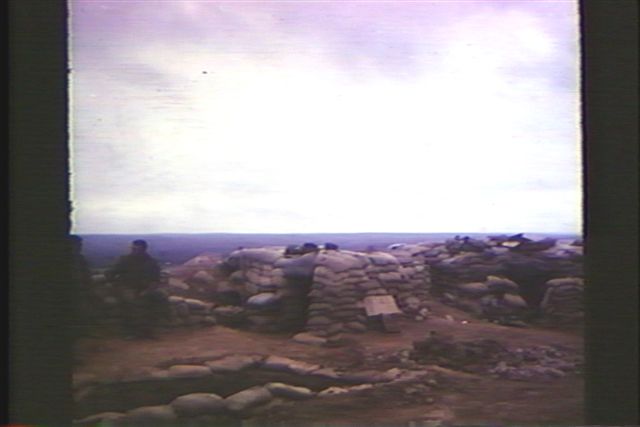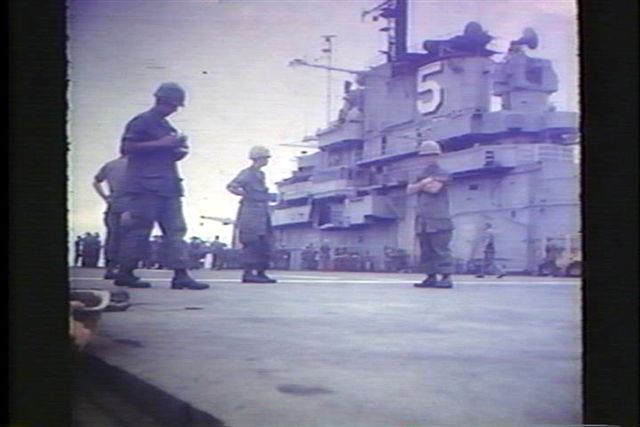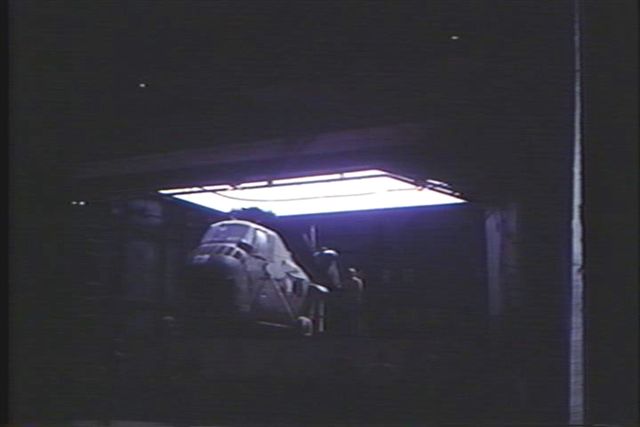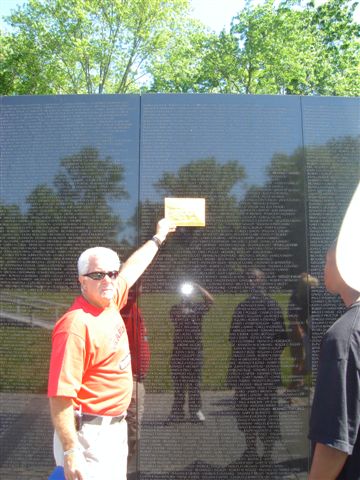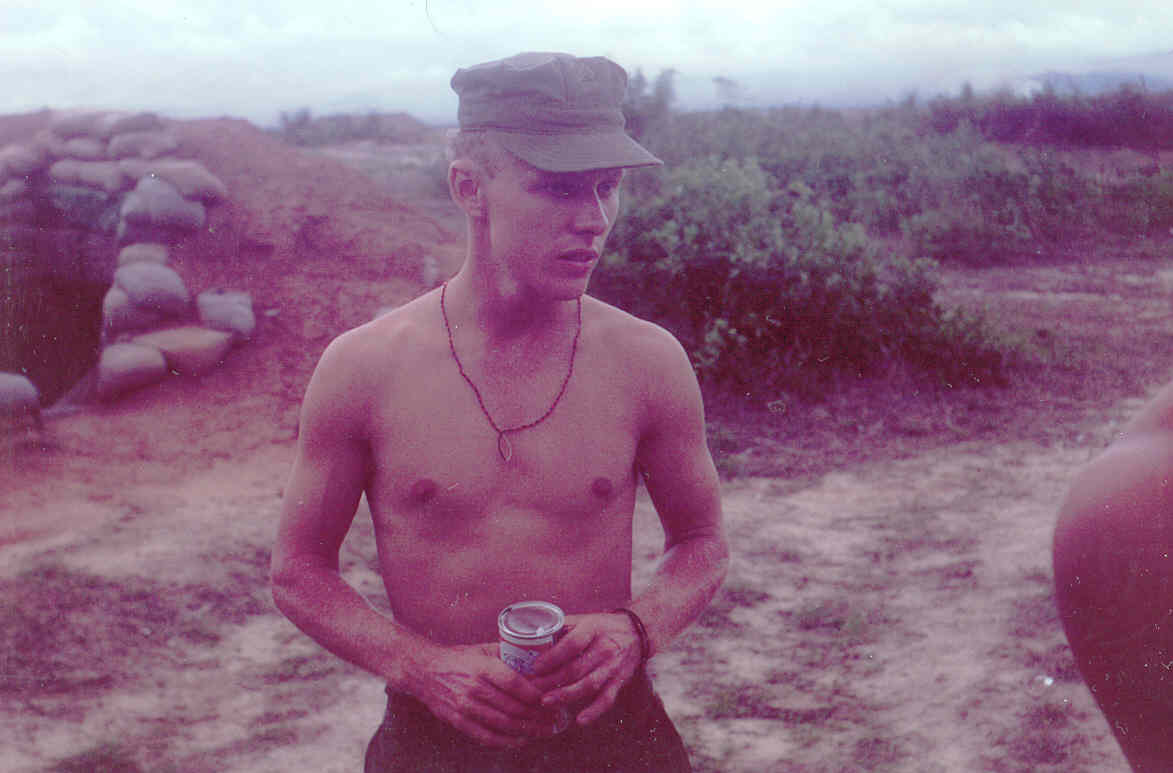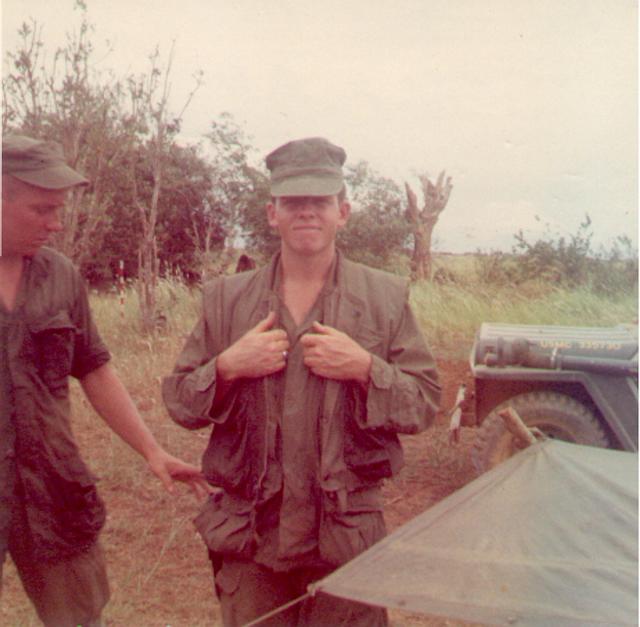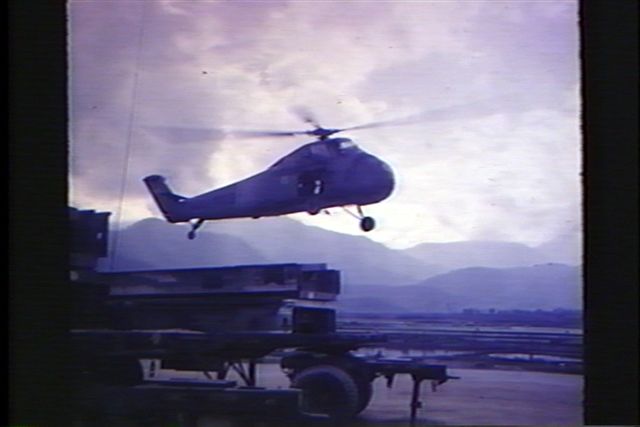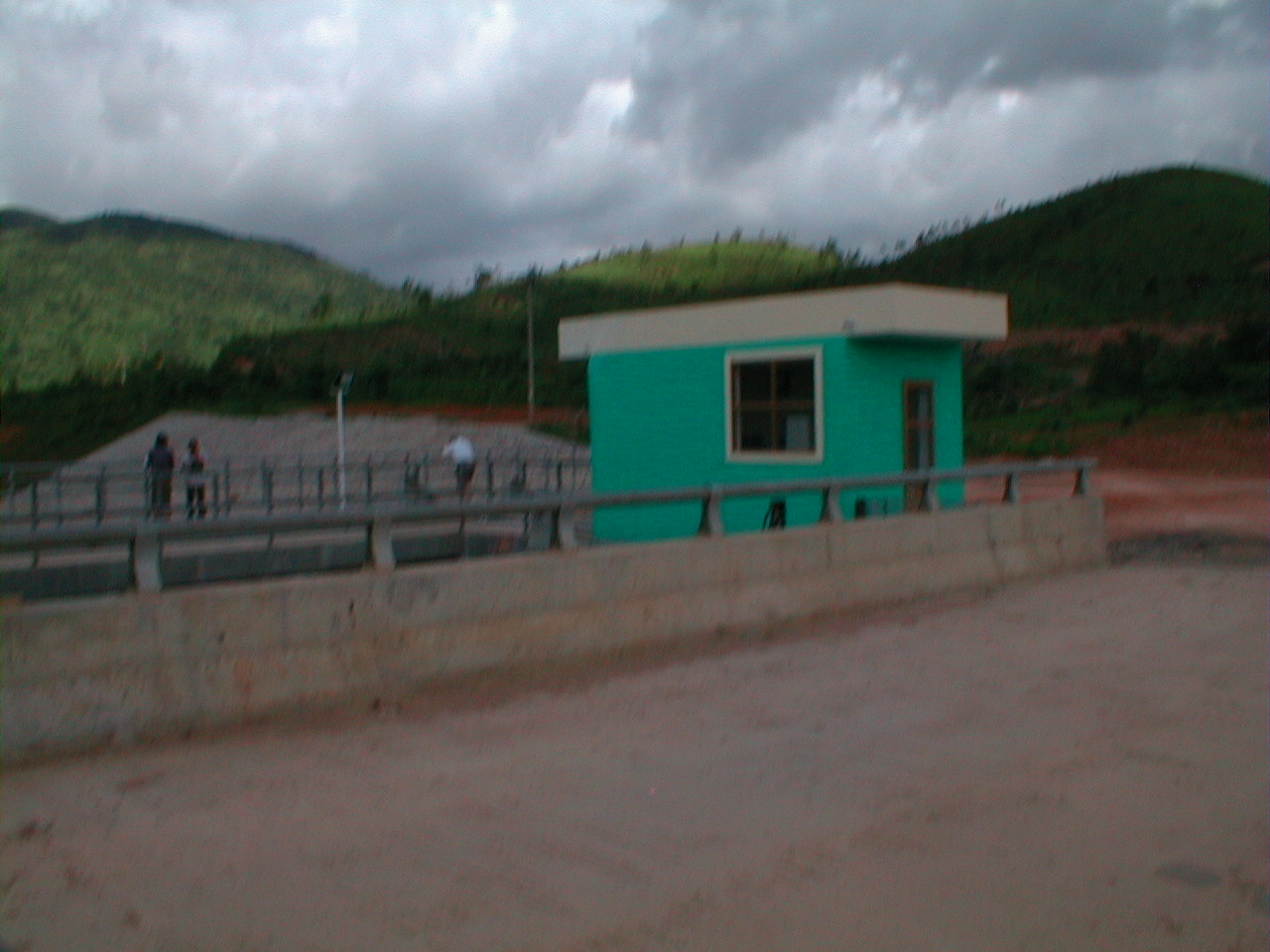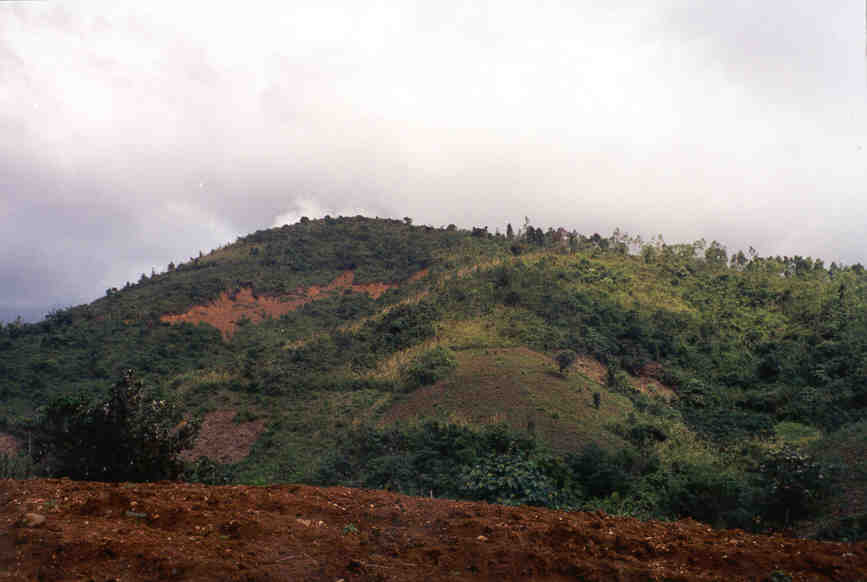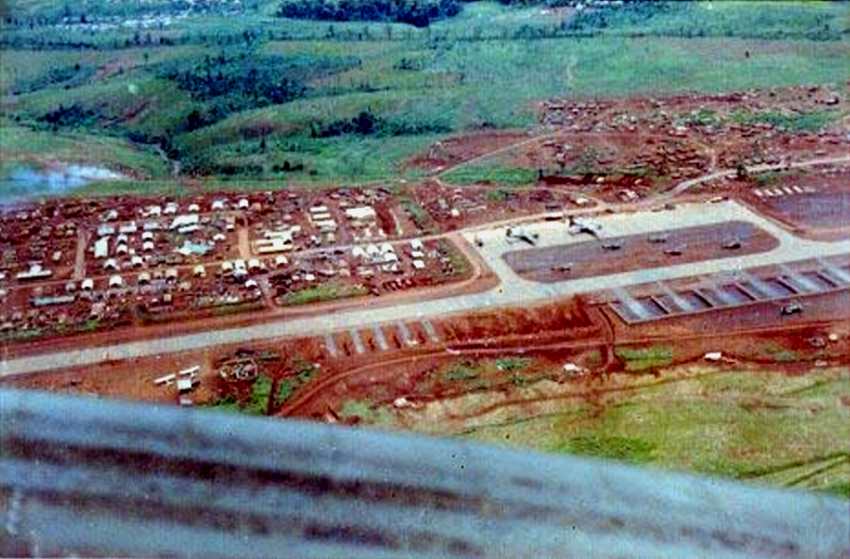| Race wasn’t a barrier for friends in Vietnam By Scott Sexton JOURNAL COLUMNIST – Sunday, November 11, 2007 Linwood Thompson (top) said he and Randy Andrews “looked at ourselves as men,” not as just a member of a race. A young Andrews (bottom) liked talking to Thompson in Vietnam because both had grown up in the Triad. In any other time or any other place, Randy Andrews and Linwood Thompson might not have ever met and certainly would not have become fast friends. But the summer of 1968 was not just any old time, nor was the central highlands of Vietnam just any other place. Circumstance brought the two young men together, and the cruel fortunes of war sealed a bond that’s lasted nearly 40 years. A fresh-faced kid from Winston-Salem, Andrews had been in Vietnam for just a few months when he was transferred in July 1968 from one Marine infantry battalion to a mortar gun crew with another. As the new guy in a new outfit, Andrews was drawn immediately to Thompson, who he found out grew up just minutes away in Greensboro. “Anything that reminds you of home, you went to it. Somebody you can talk to, somebody who knows the same landmarks,” Andrews said. “I was immediately drawn to him. We were really close.” The two men wound up fighting side by side in a vicious battle on a godforsaken hill with the uninspiring name of LZ Margo in mid-September.Then came a fateful day nearly two weeks later. If you listen to Andrews talk about Thompson and didn’t know the whole story, you might think he was talking about a relative, not just some guy he served with. He describes in detail their jobs with the mortar crew, the where and how of their being wounded, and how they found each other again after losing touch. Yet it’s a good 20 minutes into the conversation before he describes his friend and matter-of-factly mentions a detail that doesn’t mean so much today as it might have in some places during the turbulent 1960s. “Linwood’s black,” he said. “It didn’t matter so much over there as it might have here. We drank each other’s water, ate each other’s food, slept in the same places. If a guy was a good guy, you could count on him to take care of you.” Asked about the unlikelihood that a black man from Greensboro and a white guy from Winston-Salem would have grown tight back home considering the racial tension of the time, Thompson answered directly. “I don’t care what anybody says, they’re wrong. A white man and a black man can get along,” he said last week from his room at the VA Medical Center in Durham, where he’s being treated for emphysema. “We looked at ourselves as men, and (race) didn’t enter our mind. “It did cross the minds of others, but you never let nothing like that enter your head in Vietnam, thinking about racial stuff. If you did, you could just go on back where you came from. We didn’t have any time for that.” ‘Keep moving’ It was Oct. 1, 1968. The 2nd Battalion of the 26th Marines had moved to a “turnpike” the North Vietnamese cut under the jungle canopy. The 2nd had spent a good part of the previous month at Margo, a misshapen lump of hillside just south of the demilitarized zone. Margo had been stripped of foliage and pockmarked with craters caused by carpet bombing and artillery rounds rained down by the North Vietnamese during a failed attempt to overrun the Marines. Worn out, the battalion nonetheless moved further north to the turnpike when ordered. “We hadn’t been there but 30 minutes trying to get the gun (set) up when incoming started in,” Andrews said. “I could hear it go off, and two or three seconds later, it would hit. Not the usual 10 or so seconds later when you usually had time to find a hole. They must have been right on top of us and shooting right straight across the road.” The Marines were exposed on the road, so they broke for a nearby tree line to find cover. While they were scrambling, Monte Henderson, a Marine from South Carolina directly in front of Andrews, dropped one of the 12-pound mortars he was carrying. “I told him, ‘I’ll get it, keep moving,'” Andrews said. “We didn’t go another 10 feet when we heard another round. I thought it was going in my hip pocket.” The shell landed nearly on top of Henderson, killing him instantly. Andrews instinctively squatted and turned back to face Thompson, who was behind him. Shrapnel from the mortar hit Thompson in the face and head. Andrews was mostly hit in the thighs and had smaller wounds elsewhere. “Linwood’s eye was lying on his cheek, and it looked like I’d been dipped in blood. You couldn’t see any white skin,” Andrews said. “I thought I was going to bleed to death, so I just tried to get comfortable there.” The other Marines in their battalion moved toward the gunfire to fight, temporarily leaving the wounded where they fell. “That was the scary part,” Andrews said. “I could see everybody stepping over me. I thought this must be something really bad.” Once the area was secured, the other Marines returned and called in a helicopter to evacuate the men. ‘I knew who it was’ Thompson doesn’t remember much about the explosion or what happened immediately after. He does remember the helicopter ride. “He tapped me on the arm and he was smiling,” he said. “He said, ‘We’re over the ocean.’ He was telling me we were free of all the shooting and mortars.” Thompson was injured more severely than Andrews, so he was taken to the USS Sanctuary, a hospital ship. Andrews was treated aboard the USS Princeton, an aircraft carrier. “I didn’t see Linwood after that,” Andrews said. Andrews left the Princeton and was moved to Okinawa, where he finished his tour of duty as a guard in a military jail. Thompson went through some rehabilitation before he was discharged. He went home to Greensboro to live with his parents and continue his recuperation. When Andrews finally made it home himself in July 1969, Andrews barely paused before he went to visit Thompson. They promised to keep in touch, and visited each other a few more times. As sometimes happens, both men got busy and grew apart, occupied with their marriages and children and jobs. Thompson moved to Washington, and they lost contact with each other. Each made a few attempts to find the other through the years, but they ran into dead ends. Phone numbers and addresses changed. Thompson’s parents had died. The Internet wasn’t much help, either, not in its infancy. Andrews persisted. About three years ago, while on an Internet message board, he found another Marine from the 2nd Battalion in Massachusetts.Andrewslearned that Thompson had moved back to Greensboro and that his phone was listed in his wife’s name. He got the number and dialed. “As soon as he opened his mouth, I knew who it was,” Thompson said. “He didn’t have to say but ‘How are you doing, partner?'” ‘What friendship is about’ Andrews said he hopped in his truck almost immediately and drove to Thompson’s house. They talked for hours, catching up on what was new in their lives and about their time in Vietnam. Determined not to lose touch again, they have visited and phoned each other more often since re-establishing contact. In the course of their conversations, each man helped the other deal with his emotions and the memories of friends who didn’t come back from Vietnam. “Monte’s death bugged me for years,” Andrews said. “If I hadn’t stopped to pick up that mortar round, I’d have been right where he was. I was just trying to be nice to the guy and he got killed.” Laughs are shared, too, when they get together, just remembering the ups and downs encountered so many years ago by a couple of North Carolina kids barely old enough to vote. “We had more good times than bad,” Thompson said. “We lost a lot of good friends over there, but we made some, too.” In recent months, Thompson’s health has declined and he has moved to the VA Hospital. He’s determined to get out, and when he does, he says, he’ll make it a point to see Andrews. “We’ll drink some Budweisers and eat some chicken wings,” he said, before turning serious again. “There’s not too many words I can put to it. If I only have another week here, my life has been complete knowing that fellow (Andrews). He’s what friendship is about.” Scott Sexton can be reached at 727-7481 or at ssexton@wsjournal.com. |

